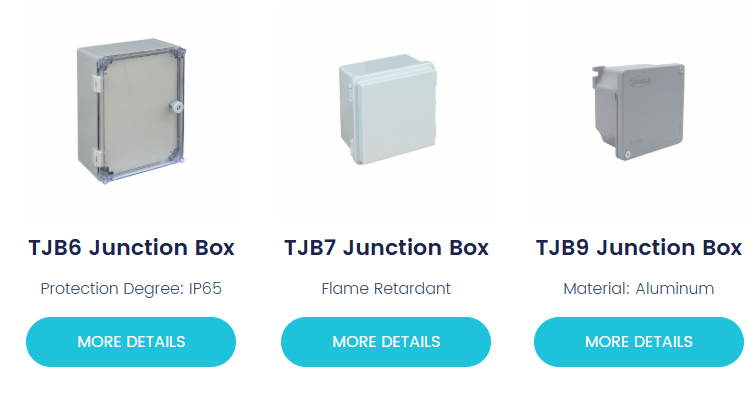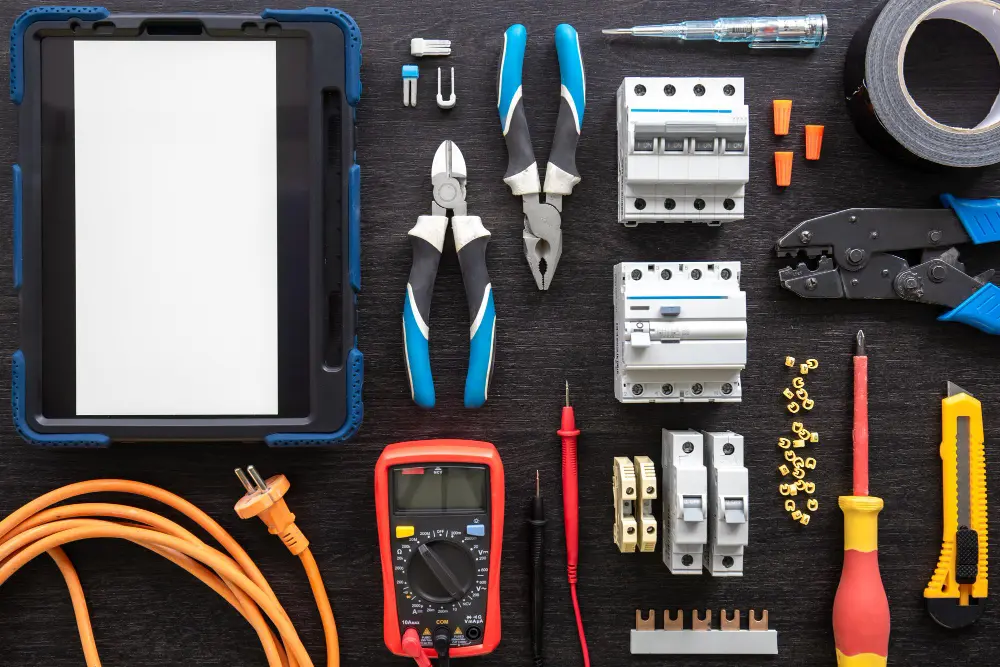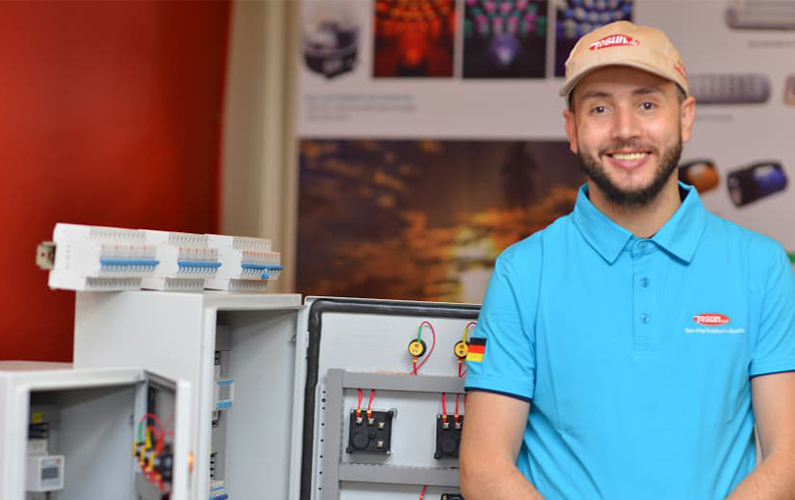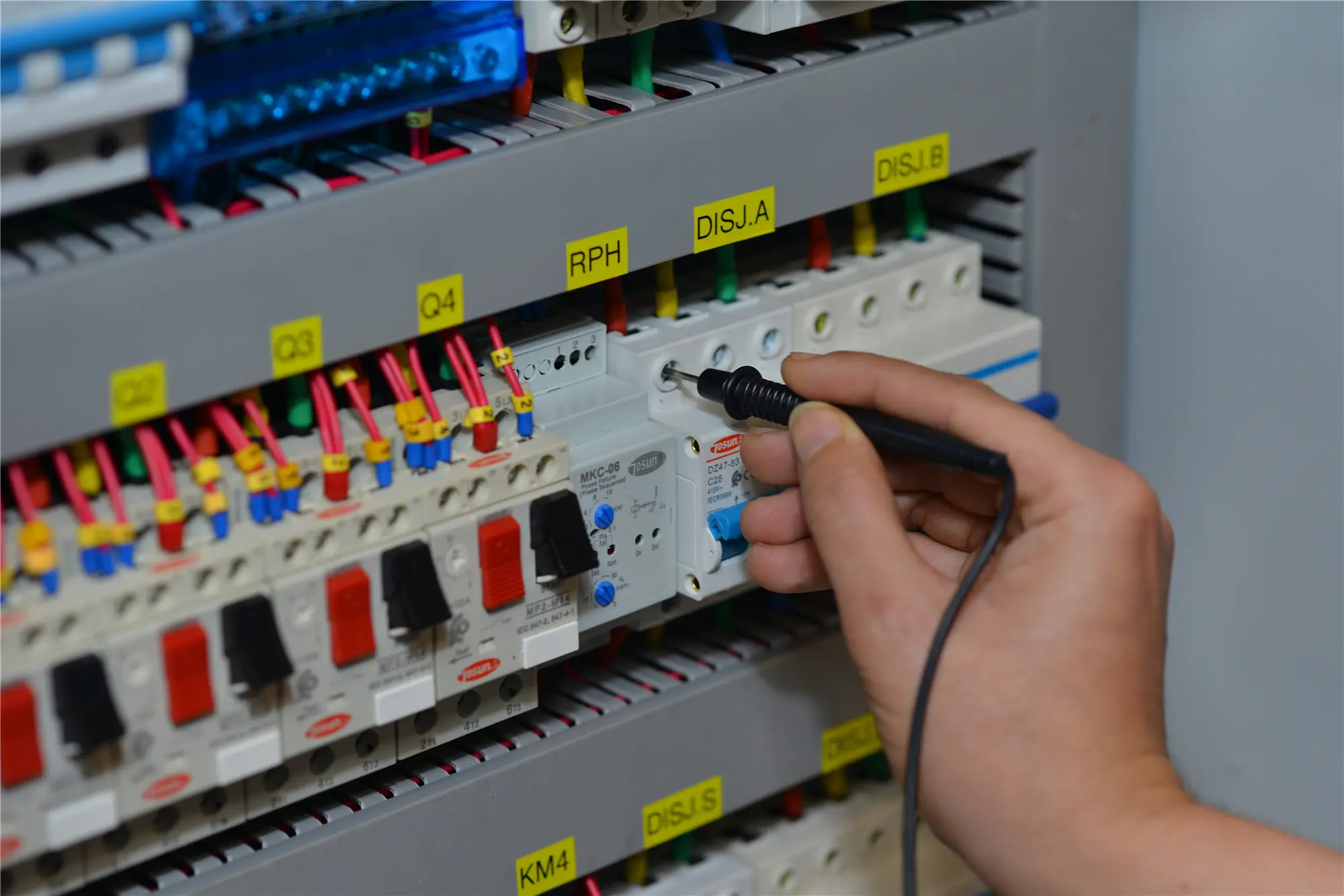መጋጠሚያ ቦክስ vs. ፑል ቦክስ፡ ልዩነቱ ምንድን ነው እና እያንዳንዱን መቼ መጠቀም እንዳለበት
ማውጫ
ቀያይርበኢንዱስትሪ እና በንግድ ፕሮጀክቶች ውስጥ ደህንነቱ የተጠበቀ እና ቀልጣፋ የኤሌክትሪክ ስርዓቶችን ለመንደፍ በመገጣጠሚያ ቦክስ vs ፑል ቦክስ መካከል ያለውን ልዩነት መረዳት አስፈላጊ ነው።
እንደ ባለሙያ ጁንየድርጊት ሳጥን አምራች ከቻይና ከ 30 ዓመታት በላይ ልምድ ያለው ፣ TOSUNLUX አስተማማኝ መፍትሄዎችን በማቅረብ አለምአቀፍ አከፋፋዮችን፣ የፓነል ገንቢዎችን እና ኮንትራክተሮችን ይደግፋል - እንደ መጋጠሚያ እና መጎተቻ ሳጥኖች ያሉ ሰፊ የኤሌክትሪክ መለዋወጫዎችን ጨምሮ።
የኃይል ማከፋፈያ እያስተዳድሩ ከሆነ ወይም የፓነል አቀማመጦችን እየነደፉ ከሆነ፣ የመገናኛ ሳጥን መቼ እንደሚጠቀሙ እና መቼ መጎተቻ ሳጥን እንደሚጠቀሙ ማወቅ ጊዜዎን ይቆጥባል፣ አደጋን ይቀንሳል እና የደህንነት መስፈርቶችን ማክበርን ያረጋግጣል።
መጋጠሚያ ቦክስ vs ፑል ቦክስ፡ መሠረታዊው ልዩነት
ላይ ላዩን ሊመስሉ ቢችሉም የማገናኛ ሳጥኖች እና መጎተቻ ሳጥኖች በኤሌክትሪክ ሲስተም ውስጥ በጣም የተለያየ ዓላማ አላቸው።
መገናኛ ሳጥን ምንድን ነው?
ብዙ የኤሌክትሪክ ገመዶችን በአንድ ላይ ለማገናኘት የመገናኛ ሳጥን ጥቅም ላይ ይውላል.
ለመገጣጠሚያዎች እና ማቋረጦች አስተማማኝ ቦታ ሲሰጥ ግንኙነቶቹን ከእርጥበት፣ ከአቧራ እና ድንገተኛ ግንኙነት ይከላከላል።
እነዚህ ሳጥኖች በተለምዶ የመብራት ወረዳዎች፣ የመቀየሪያ ሰሌዳዎች እና የመኖሪያ ወይም የኢንዱስትሪ ሽቦ አቀማመጦች ውስጥ ያገለግላሉ።
የመሳብ ሳጥን ምንድን ነው?
በሌላ በኩል የሚጎትት ሳጥን ገመዶችን ሳይገናኙ ወይም ሳይሰነጣጥሩ ለመጎተት፣ አቅጣጫ ለማስኬድ ወይም ለመጠገን መቆጣጠሪያዎችን ያቀርባል።
እነዚህ በተለይ በረጅም የቧንቧ መስመሮች ወይም ውስብስብ የንግድ እና የኢንዱስትሪ ተከላዎች በቀጥታ የኬብል መጎተት የማይቻል ነው.
የመሳብ ሳጥን vs መጋጠሚያ ሳጥን?
መልሱ የሚወሰነው ገመዶችን እየተቀላቀሉ (የመጋጠሚያ ሳጥንን ይጠቀሙ) ወይም በቀላሉ በማዘዋወር (የመሳብ ሳጥን ይጠቀሙ)።
የተለመዱ መተግበሪያዎች: እያንዳንዱን ሳጥን መቼ መጠቀም እንደሚቻል
የመገናኛ ሳጥን መቼ መጠቀም እንዳለበት
- ሽቦዎች በተጣመሩበት ፣ በተሰነጣጠሉ ወይም በተቆራረጡ ቦታዎች ላይ
- በግድግዳዎች ውስጥ, ጣሪያዎች ወይም በንጣፎች ላይ ተጭነዋል
- በስርጭት ስርዓቶች ውስጥ የኤሌክትሪክ ግንኙነቶችን ለመጠበቅ
- ብዙ ወረዳዎች በሚገናኙባቸው የፓነል ስብሰባዎች ውስጥ
የመጎተት ሳጥን መቼ መጠቀም እንዳለበት
- የሚጎትት ውጥረትን ለመቀነስ በሚያስፈልግበት ረጅም ቱቦዎች ውስጥ
- ሽቦውን ወደ ሌላ አቅጣጫ ለመቀየር በማጠፊያ ቱቦ ውስጥ
- በመሬት ውስጥ የቧንቧ መስመሮች ወይም የመገልገያ ኮሪደሮች
- ለጥገና ወደ ተቆጣጣሪዎች ወደፊት መድረስ በሚያስፈልግበት ጊዜ
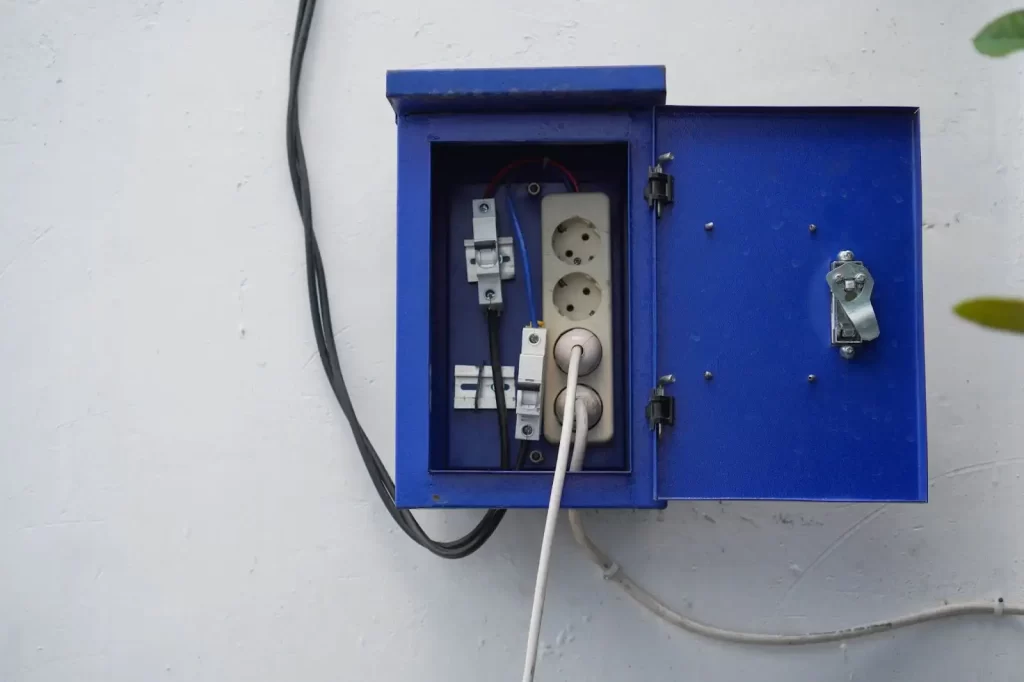
በኢንዱስትሪ ጭነቶች ውስጥ ትክክለኛው ሳጥን ለምን አስፈላጊ ነው?
ትክክለኛውን ማቀፊያ መምረጥ ኮድን መከተል ብቻ አይደለም - በቀጥታ የስርዓት ደህንነትን, የጥገና ቅልጥፍናን እና የመጫኛ ወጪዎችን ይነካል.
የመጎተቻ ሳጥን የሚያስፈልግበት መገናኛ ሳጥን ከጫኑ ከመጠን በላይ ማሞቅ፣ በኬብሎች ላይ ጭንቀት እና ደንቦችን አለማክበር ያጋልጣሉ።
በተመሳሳይ፣ የመስቀለኛ መንገዱ ሳጥን የሚያስፈልግበት ፑል ቦክስ መጠቀም ማለት ለሽቦ መሰንጠቅ እና ማቋረጫ ተገቢውን አካባቢ አጥተውታል።
ለአለም አቀፍ ምህንድስና ተቋራጮች በከባድ የኢንዱስትሪ ሸክሞች ውስጥ የስርዓት አስተማማኝነትን ለማረጋገጥ የመገናኛ እና የመሳብ ሳጥኖችን በአግባቡ መጠቀም ወሳኝ ነው።
የመጠን ግምቶች፡ በትክክል ማግኘት
መገናኛ ወይም መጎተቻ ሳጥን እየተጠቀሙም ይሁኑ የመጠን ጉዳይ - እና ልኬቶችን ለማስላት ግልጽ ህጎች አሉ።
የመጠን መስቀለኛ መንገድ ሳጥኖች ማስያ በመጠቀም
እንደ NEC (ብሔራዊ ኤሌክትሪክ ኮድ) ያሉ የቁጥጥር ኮዶች የሚከተሉትን ቀመሮች ይሰጣሉ፡-
- የመቆጣጠሪያዎች ብዛት እና መጠን
- የቧንቧ ማስገቢያ አቅጣጫ
- ዝቅተኛው የሽቦ ማጠፍያ ቦታ
- የመገጣጠም አበል
ሀ መጠቀም ይችላሉ። የመጠን መጋጠሚያ ሳጥን ትክክለኛ ክፍተቶችን እና ደህንነቱ የተጠበቀ የሽቦ አያያዝን ለማረጋገጥ የሚያስፈልጉትን የሳጥን መጠኖች በፍጥነት ለመወሰን ማስያ።
ከመጠን በላይ መጨመር ውጤታማ ያልሆነ የቦታ አጠቃቀምን ሊያመጣ ይችላል, ነገር ግን ማነስ የደህንነት ኮዶችን ሊጥስ ወይም የሙቀት መጨመር ሊያስከትል ይችላል.
TOSUNLUX ደንበኞችን በልኬት ምክሮች በተለይም ከብጁ ጭነቶች ወይም ከአለም አቀፍ ደረጃዎች ጋር ሲገናኙ ሊረዳቸው ይችላል።
ቁሳቁስ እና የመጫኛ አማራጮች
ሁለቱም የሳጥኖች ዓይነቶች በመተግበሪያው ላይ በመመስረት በተለያዩ ቁሳቁሶች እና ውቅሮች ውስጥ ይመጣሉ
የመገናኛ ሳጥኖች
- ፕላስቲክ (PVC) - ቀላል ክብደት ያለው, ዝገትን የሚቋቋም, ለቤት ውስጥ አገልግሎት ተስማሚ ነው
- ብረት (ብረት ወይም አልሙኒየም) - ዘላቂ, ሙቀትን የሚቋቋም, ብዙውን ጊዜ በኢንዱስትሪ ውስጥ ጥቅም ላይ ይውላል
- የአየር ሁኔታ መከላከያ አማራጮች - ለቤት ውጭ ወይም እርጥብ አካባቢዎች IP-ደረጃ የተሰጠው
የሚጎትቱ ሳጥኖች
- በተለምዶ ከብረት የተሰራ ለጥንካሬ, በተለይም በትላልቅ የቧንቧ መስመሮች ውስጥ
- ላይ-ላይ የተፈናጠጠ፣ የታጠበ-የተሰቀለ ወይም ከመሬት በታች-ደረጃ የተሰጠው ሊሆን ይችላል።
- ብዙውን ጊዜ ለጥገና ተደራሽነት ተንቀሳቃሽ ሽፋኖች ወይም የታጠቁ በሮች ይዘው ይምጡ
ቶሱንሉክስ፡- የእርስዎ የሚታመን የመገናኛ እና የመጎተት ሳጥኖች አቅራቢ
በ TOSUNLUX ውስጥ እኛ ማምረት ብቻ አይደለም-በዝቅተኛ-ቮልቴጅ የኤሌክትሪክ ኢንዱስትሪ ውስጥ ላሉ ዓለም አቀፍ ባለሙያዎች መፍትሄዎችን እንፈጥራለን.
ለተወሰኑ ፕሮጄክቶች መደበኛ መጠን ያላቸው ሳጥኖች ወይም ብጁ ዲዛይኖች ቢፈልጉ፣ ሽፋን አግኝተናል።
TOSUNLUX ን ለምን ይምረጡ?
- አንድ-ማቆሚያ ምንጭ - ከኤምሲቢዎች እና አርሲቢዎች ለኢቪ ቻርጀሮች እና መለዋወጫዎች ግዥን ለማቃለል ሰፊ የምርት መስመር እናቀርባለን።
- የተረጋገጠ ጥራት - ሁሉም ማቀፊያዎቻችን CE፣ CB፣ TUV እና IRAM መስፈርቶችን ያሟላሉ፣ ይህም በአለም አቀፍ ፕሮጀክቶች ላይ የአእምሮ ሰላም ይሰጥዎታል።
- ከፍተኛ ወጪ አፈጻጸም ጥምርታ - የእኛ የቤት ውስጥ ምርት ጥራትን ሳይጎዳ ተወዳዳሪ ዋጋን እንድናቀርብ ያስችለናል።
- OEM እና ማበጀት - ለልዩ አፕሊኬሽኖች ብጁ መጎተቻ እና መጋጠሚያ ሳጥኖችን ለመፍጠር ከፓነል ግንበኞች እና የኦሪጂናል ዕቃ አምራቾች ጋር እንሰራለን።
- የክልል አከፋፋይ ድጋፍ - የረጅም ጊዜ አጋሮቻችንን ከግብይት ግብዓቶች፣ ከዕቃ ዝርዝር ስልቶች እና ከግዛት ጥበቃ ጋር እንደግፋለን።
የእውነተኛ-ዓለም ሁኔታዎች
የመገጣጠሚያ ቦክስ vs ፑል ቦክስ ልዩነትን መረዳት በተግባራዊ መቼቶች እንዴት እንደሚጫወት እንመልከት፡-
ሁኔታ 1፡ የንግድ ቢሮ መብራት
የሕንፃ ተቋራጭ በሶስት ፎቅ ላይ በደርዘን የሚቆጠሩ የመብራት ዕቃዎችን ይጭናል።
በእያንዳንዱ ፎቅ ደረጃ ከበርካታ ወረዳዎች የሚመጡ ገመዶች መገናኘት እና መደራጀት አለባቸው.
በዚህ ሁኔታ የማገናኛ ሳጥኖች መቆጣጠሪያዎችን በአስተማማኝ ሁኔታ ለመቀላቀል እና ለወደፊቱ የጥገና አገልግሎት ለመስጠት አስፈላጊ ናቸው.
ሁኔታ 2፡ ከመሬት በታች የመኪና ማቆሚያ ሃይል መስመር
የትራንስፎርመር ክፍሉን ከ EV ቻርጅ ማደያዎች ጋር በማገናኘት ረጅም የቧንቧ መስመር ዝርጋታ ኤሌክትሪክ ባለሙያው ከ60 ሜትር በላይ የኬብል መጎተትን ለማቃለል የመዳረሻ ነጥቦችን ይፈልጋል።
የሚጎትቱ ሳጥኖችን በየተወሰነ ጊዜ መጫን የኬብል ብልሽትን ለመከላከል ይረዳል እና በኋላ ላይ ቀላል ጥገና ያስችላል።
በሁለቱም ሁኔታዎች ትክክለኛው የሳጥን ምርጫ የኮድ ማክበርን, ቀላል ጭነትን እና የአሠራር ደህንነትን ያረጋግጣል.
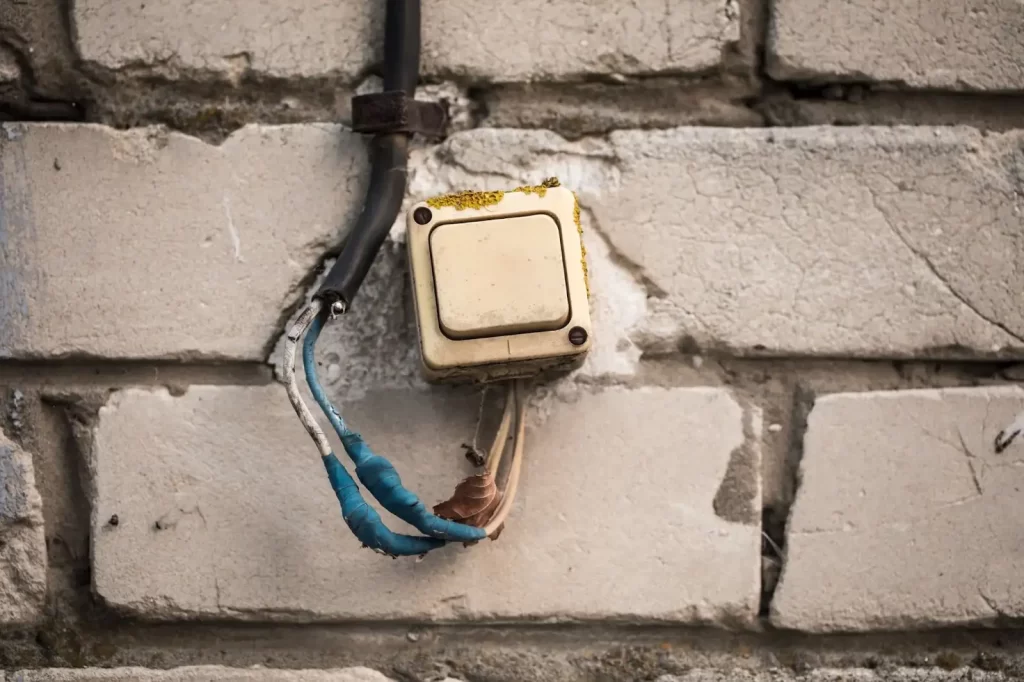
መጋጠሚያ ቦክስ vs. ፑል ቦክስ፡ የተለመዱ ስህተቶችን ማስወገድ
ከአከፋፋዮች እና ተቋራጮች ጋር ስንሰራ፣በሳጥን ምርጫ ውስጥ ብዙ ጊዜ ተደጋጋሚ ስህተቶች ያጋጥሙናል።
- የኬብል መጎተት የሚያስፈልግበት የመገናኛ ሳጥን በመጠቀም - ወደማይደረስበት ሽቦ እና ደካማ የኬብል መስመር ይመራል
- ሳጥኖችን ዝቅ ማድረግ - ኮዶችን ይጥሳል እና የአስተላላፊው ጫና ያስከትላል
- ያልተረጋገጡ ሳጥኖችን መጠቀም - በአለምአቀፍ ፕሮጀክቶች ውስጥ የመታዘዝ ጉዳዮችን ይፈጥራል
- ትክክል ያልሆነ የቁሳቁስ ምርጫ - ልክ እንደ ከአየር ሁኔታ የማይከላከል ሳጥን ከቤት ውጭ መጠቀም
በ TOSUNLUX እነዚህን ችግሮች በባለሙያ መመሪያ፣ በጥራት የተመሰከረላቸው ምርቶች እና ከጫፍ እስከ ጫፍ ባለው ድጋፍ ማስወገድ ይችላሉ።
የመጨረሻ ሐሳቦች: የትኛውን መምረጥ አለቦት?
ወደ መሳብ ቦክስ እና መጋጠሚያ ሳጥን ሲመጣ፣ ምርጫው ወደ ዓላማው ይጎርፋል፡-
- የሽቦ ማቋረጦችን ማገናኘት እና መጠበቅ ይፈልጋሉ? ከመገናኛ ሳጥን ጋር ይሂዱ።
- በቧንቧ ስርዓት ውስጥ መቆጣጠሪያዎችን መጎተት ፣ መመገብ ወይም መመርመር ይፈልጋሉ? የሚጎትት ሳጥን ይምረጡ።
ይህንን ልዩነት መረዳቱ የኤሌክትሪክ ስርዓት ደህንነትን, የመትከልን ቀላልነት እና የረጅም ጊዜ ጥገናን ለማሻሻል ይረዳል.
ለምን አለምአቀፍ ገዢዎች TOSUNLUXን ያምናሉ
ወደ ሶስት አስርት አመታት በሚጠጋ የማምረቻ ምርታማነት፣ TOSUNLUX በመላው አውሮፓ፣ ደቡብ አሜሪካ፣ መካከለኛው ምስራቅ፣ አፍሪካ እና ደቡብ ምስራቅ እስያ B2B ደንበኞችን አመኔታ አትርፏል።
ከመገናኛ እና ከሳጥኖች ወደ ሙሌት ይጎትቱ ዝቅተኛ-ቮልቴጅ የኤሌክትሪክ ሲስተሞች፣ እርስዎ ሊተማመኑበት የሚችሉትን ጥራት እናቀርባለን-በማረጋገጫ፣ በማበጀት እና በተወዳዳሪ ዋጋ።
ቀጣዩን እርምጃ በ TOSUNLUX ይውሰዱ
- አከፋፋዮች እና አስመጪዎችየ2025–2026 የምርት ካታሎግ ይጠይቁ እና ስለአከፋፋይ የድጋፍ ፕሮግራማችን የበለጠ ይወቁ።
- የፓነል ግንበኞችለ ብጁ-የተሰራ መስቀለኛ መንገድ ወይም መጎተቻ ሳጥኖች የእርስዎን ቴክኒካዊ ዝርዝሮች ያስገቡ።
- የምህንድስና ተቋራጮች: ያግኙን አሁን ከፕሮጀክትዎ ሚዛን ጋር ለተዘጋጀ ተወዳዳሪ ዋጋ።
ስልክ፡ +86-577-88671000
ኢሜል፡- ceo@tosun.com
ስካይፕ: የፀሐይ ኤሌክትሪክ
Wechat፡ + 86-139 6881 9286
WhatsApp: + 86-139 0587 7291
አድራሻ: ክፍል ቁጥር 1001 Wenzhou Fortune ማዕከል, ጣቢያ መንገድ, Wenzhou, ቻይና
ጥቅስ ጠይቅ
WhatsApp እኛን
 : +86-139 0587 7291
: +86-139 0587 7291 እንግሊዝኛ
እንግሊዝኛ ኢስፓኞል
ኢስፓኞል ሩስስኪ
ሩስስኪ ፍራንሷ
ፍራንሷ العربية
العربية ፖርቱጋል ዶ ብራሲል
ፖርቱጋል ዶ ብራሲል Українська
Українська ቱርክሴ
ቱርክሴ ፖልስኪ
ፖልስኪ ኔደርላንድስ
ኔደርላንድስ ጣሊያናዊ
ጣሊያናዊ ባሃሳ ኢንዶኔዥያ
ባሃሳ ኢንዶኔዥያ ኤችአይቪ
ኤችአይቪ اردو
اردو ንህዝቢ ትግራይ ንህዝቢ ትግራይ ንህዝቢ ትግራይ ንህዝቢ ኤርትራ ንህዝቢ ምውሳድ ምውሳድ እዩ።
ንህዝቢ ትግራይ ንህዝቢ ትግራይ ንህዝቢ ትግራይ ንህዝቢ ኤርትራ ንህዝቢ ምውሳድ ምውሳድ እዩ። Հայերեն
Հայերեն እ.ኤ.አ
እ.ኤ.አ ሞንጎል።
ሞንጎል። ፋርሲ
ፋርሲ ሽኪፕ
ሽኪፕ Ελληνικά
Ελληνικά

